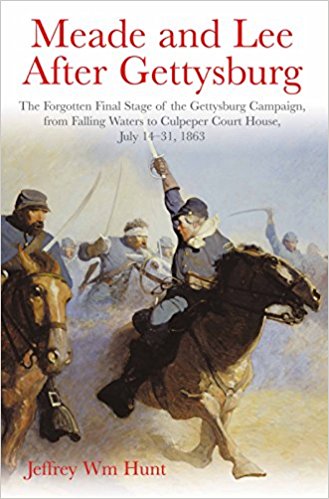Across the Bloody Chasm: The Culture of Commemoration Among Civil War Veterans by M. Keith Harris. Louisiana State University Press, 2014. Cloth, ISBN: 978-0807157725. $42.50.
 In this new study of Civil War memory, M. Keith Harris explores the complicated relationship between reconciliation and remembering the Civil War. Across the Bloody Chasm: The Culture of Commemoration Among Civil War Veterans focuses on southern and almost exclusively white northern soldiers and their efforts to keep sectionalism alive in an era promoting reconciliation. In fact, they “worked tirelessly to preserve sectional memories that advanced one side over the other,” he argues (2). He also criticizes David Blight’s framework in Race and Reunion [2001] of linking race to reconciliation, suggesting that “analysis of the reconciliation period as a movement founded on the marginalization of black people is of limited utility” and as such “runs the risk of obscuring veterans’ intentions” (5).
In this new study of Civil War memory, M. Keith Harris explores the complicated relationship between reconciliation and remembering the Civil War. Across the Bloody Chasm: The Culture of Commemoration Among Civil War Veterans focuses on southern and almost exclusively white northern soldiers and their efforts to keep sectionalism alive in an era promoting reconciliation. In fact, they “worked tirelessly to preserve sectional memories that advanced one side over the other,” he argues (2). He also criticizes David Blight’s framework in Race and Reunion [2001] of linking race to reconciliation, suggesting that “analysis of the reconciliation period as a movement founded on the marginalization of black people is of limited utility” and as such “runs the risk of obscuring veterans’ intentions” (5).
Like Caroline Janney in Remembering the Civil War [2013], the author stresses a difference between reunion and reconciliation. For Harris, reunion is a state process that was made possible by Confederate surrender. Reconciliation, though, is something the participants do—it “conveys forgiveness” and also “acceptance that those once-warring parties were again fellow citizens” on the basis of their past unity and shared history, such as a common language, religion, and founding documents. Soldiers “set out to craft this particular message of reconciliation from the shattered shards of disunion. But in so doing, they preserved the memories of their sectional ideals, their trials, and their respective causes.” Thus, they reunited, but on their own terms (2).
Harris organizes his book thematically, his first chapter covering two issues that made forgiveness tough: prisoner of war camps and hard war tactics. Soldiers were loath to forget these injuries and degradations. While most historians focus on southern POW camps, Harris also recounts a few instances where southerners were imprisoned. Their main complaint seemed to be the existence of the black soldiers guarding them. His next chapter focuses on northern remembrances of “southern treason,” especially looking at Grand Army of the Republic gatherings. Even though Union soldiers wanted “national unity,” they could not forget the actions white southerners had taken: “deeds that were unforgivable” (42). Southerners, of course, were no more willing to reconcile. Confederate veterans embraced Revolutionary War rhetoric as a way to defend their actions in secession but also explain why they could be reunited in the nation. Thus, they were not being “disingenuous,” but instead crafted their “reconciliatory rhetoric” carefully, arguing “the founders had maintained the rights of states to resist federal authority” (71).
The closing section of the book deals with the issue of slavery and the way veterans remembered it. The penultimate chapter focuses on Union remembrance of emancipation. Northern veterans celebrated emancipation, seeing it as “a cause worth of their efforts,” along with the preservation of the Union (92). It is important to note that while soldiers may have hailed these developments, they did not necessarily support black political and social issues. Finally, Harris shows us a Confederate response to Union soldiers’ emphasis on slavery. They steadfastly resolved that slavery had nothing to do with their fight. He points to the textbook campaigns, pushing back against arguments that focus solely on women’s efforts in protesting northern textbooks in southern classrooms. Veterans, too, fought against this encroachment in their schools.
One problem is that this book lacks a chronological framework—an issue for historians looking to see change over time. Jumping back and forth across fifty years within individual chapters shapes the book’s analysis in a misleading way. Harris presents a static form of Civil War memory, even though the contexts and purposes of those memories change. What drives these veterans to make memories? Particularly for the GAR, portraying it as a veterans’ group without recognizing the important lobbying power behind it is problematic. This group worked tirelessly to remind the nation of their sacrifices—in part for financial gain. The second issue is that these veterans appear to operate in a vacuum. They had families, and their wives played a part in shaping memories and keeping causes alive. It would be unfair to insist Harris write a different book, but this one could have been strengthened if he had put these men in their social and political context.
Harris’ book continues the trend of emphasizing the contested memories of the Civil War. Rather than seeing a synthesis of reconciliation, he argues that the veterans held fast to their sectional loyalties and did not agree. Reunion was possible, as the nation was re-forged, but the men who fought the war did not forget the conflict and its meanings. Despite its flaws, Across the Bloody Chasm is a short, readable addition to the literature on Civil War memory.
Krista Kinslow is a Ph.D. Candidate in History at Boston University.
